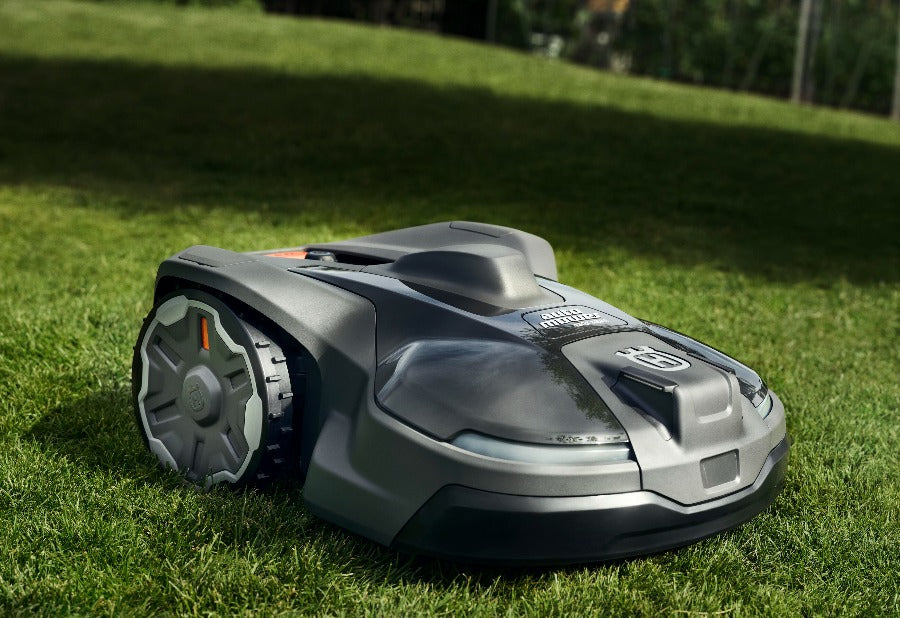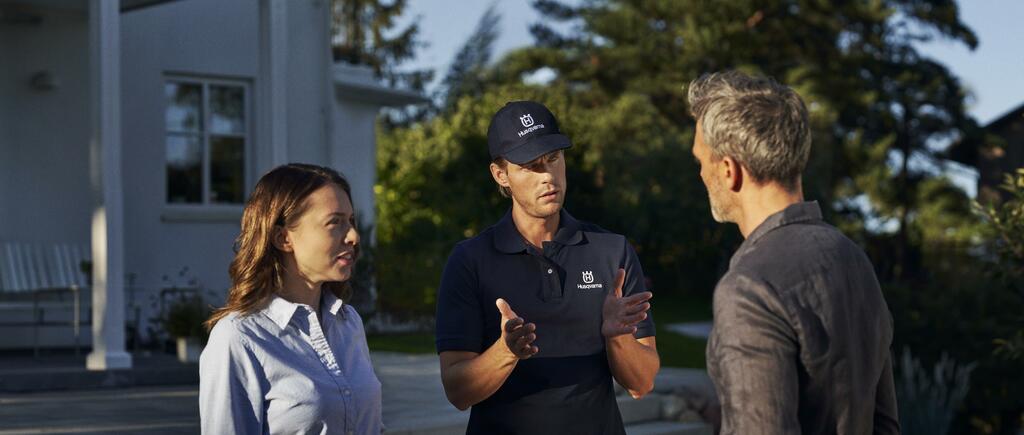Installing a robotic lawn mower involves defining where it can work by setting up a boundary, usually using a wire or wireless signals. These mowers also need a charging station installed at the lawn's edge so they can recharge themselves when needed. While most brands have a similar setup process, our focus is on Husqvarna Automower and Gardena Sileno robotic lawn mowers, and the information below is tailored to these specific brands.
Installing a robot lawn mower should take between 1 hour and 10 hours.
Setting up a Robotic Lawn Mower on a small lawn
For smaller lawns under 1000m², robotic lawn mowers utilize a physical boundary wire to define their working area. You have the option to install this yourself or employ a professional installer like Mincost for assistance.
- You need to identify a place where the robots charging station will be located.
- ideally within 5 meters of an electric socket.
- The charging station should be located on flat ground.
- Free from obstructions 1m either side of the charging station and also 3m in front.

- The boundary wire connects to the back of the charging station and is laid around the outside of the lawn. Look at the mowers specific instruction on how far to lay the boundary wire away from a wall or dropped edge etc. The robot mower will cut over the wire so it should not be laid on the very edge.

The example above shows how to lay the wire when installing an Husqvarna Automower of Gardena sileno robot. Note how the wire is laid around the trees. this wire can be laid under the same peg or in the same grove, just make sure that the wire comes out in the correction direction when you return to the boundary.

This loop has been left so you can attached a guide wire easily.
3. Install a 1 or more guide wires
- A guide wire comes from the charging station and is laid out to the furthest point of the installation or to an area which has a narrow page for the robot to navigate.
- The wire is connected to the back of the charging station and also to the perimeter wire. This was the reason for leaving the loop in the boundary wire
- The aim of the guide wires are to split the lawn in half so wherever robot is working it can find a guide wire easily.

In the image above the white wire is the boundary and the red wire is the guide wire. You will also notice the rectangle area to the right of the image has a boundary wire but no guide wire. This is where the secondary area is not reachable because there is no path or maybe its on a different level. The robot can still operate on this area if you manually move it but you will need to let it know its working on a secondary area (not all models have this feature.) If you don't the robot will cut and then try to return to charge which is not possible so it will flatten the battery and can damage the battery if its done multiple times.
Quick video guide from Gardena which shows the installation process.
Installing a robot lawn mower on a large lawn
Installing a robot on a lawn larger than 1000m² closely resembles the process for smaller lawns, sharing many common steps. However, there are some notable differences. Larger lawns are more likely to have multiple guide wires and obstacles, requiring extra consideration in wire placement to avoid any crossing with the boundary wire.
Time is a crucial factor in determining the installation method for your robot lawn mower. The meticulous placement of wires around a significantly large area can be time-intensive, possibly spanning multiple days of careful work. Errors during this process can be costly.
Opting for a professional installer like Mincost may be a wise decision. With our extensive experience in numerous installations, we ensure precise setup right from the outset. Our use of cable laying machinery allows for nearly invisible installations, enhancing the overall quality of the setup. Additionally, choosing us for installation may offer advantages, such as extended warranty benefits.
Installing a Wireless Robotic Lawn Mower
The process for installing a wireless Husqvarna Automower. Using Husqvarna's EPOS system. Our advise is that you use a professional installer like Mincost to complete your set up but again its possible for you do it yourself.
The basic components of a wireless installation consist of
- Robotic Lawn Mower
- Charging Station
- EPOS Reference Station
- Smart Phone or tablet

Before diving in, ensure you have the necessary components:
- Automower® NERA robotic mower, power supply, and charging station
- EPOS Plug-in accessory, reference station, and power supply
- Access to an electricity point for the charging station and reference station
Step 1: Download the Automower® Connect app Get the Automower® Connect app from the App Store or Google Play. Sign up, create a Husqvarna account, and log in to link your mower.
Step 2: Pair the mower with the app Turn on your mower and follow the app's instructions. If the mower has low battery, complete this step after step 4.
Step 3: Place the charging station Select an open area for the charging station, avoiding spots under trees or roofs. Refer to the video for details. Connect the low voltage cable from the power supply to the charging station and plug the power supply into a 100-240V wall socket.

Step 4: Charge the mower Plug in the charging station, place the mower inside, and turn it on to charge. The app will confirm the charging status.
Step 5: Set up the reference station Choose a suitable location for the weatherproof reference station, ensuring it has a clear view of the same satellite as the mower. Mount and connect it to a power outlet. Once the steady green light appears, pair the reference station with your mower using the EPOS setup support in the Automower® Connect app.

Step 6: Create the virtual boundaries Initiate the app and guide your mower to find a docking point in front of the charging station. Before setting the boundaries, check the app for the reference point on the mower. Using the app's drive feature, steer the mower clockwise around the lawn, dropping points to outline the boundary. Edit these points on the map view as needed. For personalized zone management, establish stay-out zones to restrict the mower from specific areas. Create transport paths to guide the mower from the work area to the charging station if it's located outside the working zone.
Step 7: Set a schedule in the app and start mowing Once completed, begin mowing your lawn. The app offers additional tips and information to optimize your mower, ensuring a flawless lawn round the clock.



